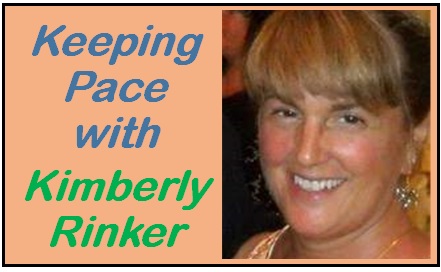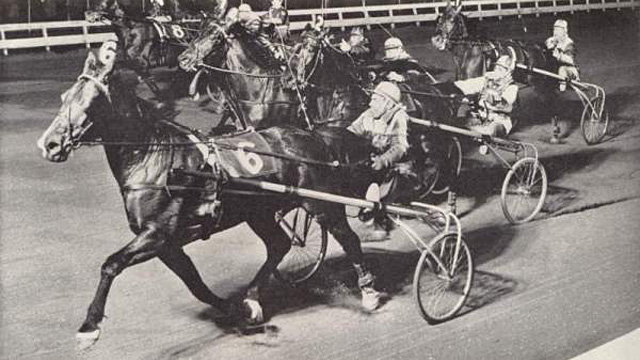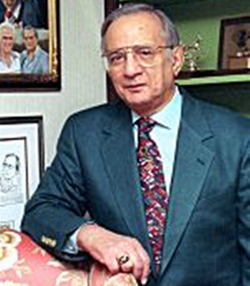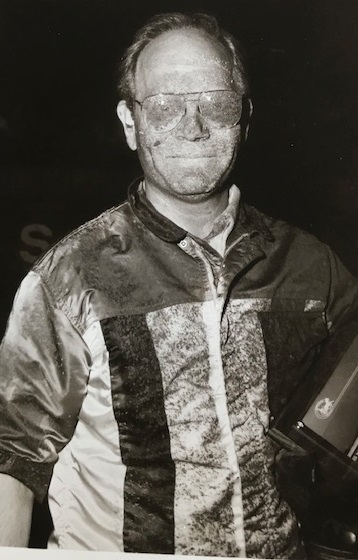John Berry has always focused on the positive.
Because of his upbeat attitude, there’s little that the Chicago native, now 80-years-old, has not accomplished during his life. In fact, John has excelled at every occupation that has caught his fancy over the decades.

Perhaps it was destiny, or maybe it was simply growing up in the same South Shore neighborhood that spurred so many other notable Chicagoans to greatness, such as musicians Bo Diddley, Gene Krupa, Ramsey Lewis, and Kanye West, or residents Enrico Fermi, Jesse Jackson, Suze Orman, Mandy Patinkin, and Michelle Obama.
Whatever the case, John grew up in a loving household at 73rd and Clyde Avenue, attending Bryn Mawr Elementary School, just two blocks west of his parent’s abode, in a quiet neighborhood that was home to several churches of varying faiths, small grocery stores, and hair salons, all sandwiched in between Jackson Park to the north, Cheltenham, Stony Island, and Calumet Heights to the south, and the Lake Michigan beaches a few blocks to the east. But it was the Byrn Mawr Bowling Alley at 71st and Jeffrey, a short walk north of the home he shared with his parents Herbert and Jane, and older brother Frank, that truly sparked a flame within the youngster.

“It was a great place to grow up,” John recalled. “One of my best friends was born three weeks after me and he was an Irish Setter named Blaze. He used to wait for me when I came out of elementary school to walk me home. Both of my folks were longtime Chicagoans. My dad had been a cowboy in Texas in the early 1930s and met my mom in Chicago—they were both very good parents. Dad worked in the plastics business in Chicago, in manufacturing, and Mom was a homemaker. My folks weren’t religious, but they taught me right from wrong.”
Chicago had long been the hotbed of bowling alleys in the United States, beginning as far back as the mid-1850s in the Windy City. By 1900 organized leagues had sprung up all over the city, and alleys were most prominent on the city’s south side and in the South Shore neighborhoods particularly. By 1952, WMAQ-TV (NBC) had launched a weekly, one-hour show entitled Championship Bowling, spotlighting Chicago, and the nation’s best matches.

“Horses or horseracing was not on my radar at that point in time,” John explained. “I was fascinated by bowling and by bowling alleys and got into my first junior league when I was eight years old and averaged 100 per game that first year. After our leagues were done, I would sneak back behind the alleys and help a kid there named Wimpy. They had auto-in setters then, but you still had to pull strings to get them set up. Wimpy got 11 cents a game and gave me four cents for helping him. That was my entire focus as a kid—I was pretty much an average student because I never really applied myself, but I did excel at bowling.”
So much so, in fact, that John was named the Illinois State Singles Bowling Champion in 1970.
But it was on Aug. 22, 1959, that John added a new dimension to his life—harness racing.
“I was 16 and was bowling in some small pot games, where most of the guys were 20 years older than me,” John remembered. “There was a big audience for those kinds of games at the time on a local level. I bowled a series of three games for a score of 774 and won $15. A guy named Luke Schroer came up to me afterward and offered me some cash because he had bet on me and made a decent score. When I wouldn’t take his money, he offered to take me out to dinner—and took me to Sportsman’s Park.”
For those readers too young to remember Sportsman’s Park, located on Chicago’s near west side in the village of Cicero (home of Al Capone) between Cicero and Laramie avenues at 21st and 31st streets, the then five-eighths mile venue was one of the most predominant and heralded harness tracks in North America.
“Luke had a box there—41A—right on the first turn in the clubhouse dining room,” John said. “Both Su Mac Lad and Senator Frost competed that night and Luke took me to meet all the horsemen—he knew them all—from Gene Reigle to Dwayne Pletcher, to the Grahams, Hankins, and Burrights. That’s how I got hooked on racing.”
“That night Senator Frost won with Dick Buxton driving in an American National, and right after that Su Mac Lad won with John Peat driving him,” John continued. “He won in 2:02 and something which was a really good mile. Su Mac Lad was a 4-year-old then and had been racing at the Illinois county fairs and didn’t have a lot of money on his card, but Dick Baker, Stanley Dancer’s right-hand man, had showed up to scope out the horse, and he bought him that night for $35,000. He’s by far one of my favorite horses of all time; a great Illinois-bred that was just super tough.”
Su Mac Lad, a gelded son of Potomac Lad—Spud’s Sue—Spud Hanover went on to earn $885,095 and take an 8-year-old record of 1:58.4 for Dancer and owner I.W. Berkemeyer of new Milford, NJ, after having been sold as a 2-year-old for $750. He was inducted into the Harness Racing Hall of Fame and Museum in 1988. Senator Frost, a gelded son of Victory Song-Spencess-Spencer, was the pride of the Urbana, Ohio-based Buxton Stable, who earned $311,854 during his career with a mark of 4, 1:57.3.

“After that night I started attending the races whenever I could,” John admitted. “Most of the people that I hung out with at the racetrack were guys who were 20, 30, and 40 years older than me, and it was great to be at the races on those Friday and Saturday nights when the best horses were around.”
John attended South Shore High School and was voted “Most Likeable,” by his peers.
“My parents would have preferred that I was named “smartest” or “most likely to succeed,” John laughed. “I didn’t care, I was so focused on horseracing by then. I thought the whole circular experience was wonderful, and one night in 1961 Luke told me, ‘There’s a guy here who can really drive, he’s driving a horse named Lloyd’s Demon and his name is Curly Smart.’ I got to meet Curly that night and we became friends and in later years, if I was traveling somewhere near Curly’s home, I’d call him up and we’d go to eat at 291 Fountain Street in Delaware, OH. He and his wife Mildred were just as nice as they could be, and always welcomed me whenever I’d show up.”
On another occasion, John got a pleasant surprise in a most unconventional way.

“In 1970 I was in Columbus, traveling to Cleveland on Route 23, and I saw the Delaware sign and I thought I’d give Curly a ring,” John said. “I kept dialing and dialing (from a pay phone) and the number wouldn’t ring through. So, I called information in an era where there was a live operator on the line, and I told her, ‘I need a number for T Wayne Smart,’ as Curly’s real first name was Thurman, which a lot of folks didn’t know. The operator says to me, ‘You mean Curly? Everybody knows Curly!’ And she gave me his number. Obviously, she must have been a Delaware resident or someone familiar with harness racing.”
With John’s foray into harness racing and his ability to write, it was only fitting that in 1964 he submitted his first racing article to now defunct The Horseman & Fair World magazine.
“At the time, there was a lot of talk among horsemen of eliminating time trials and I didn’t think it was a good idea,” John noted. “So, I sent in a story with my thoughts and got a call from Elizabeth “Weed” Rorty, and pretty soon I got to know all of the staff and was writing on a regular basis for them.”
Another reason that John was making the shift from the bowing to the harness racing scene was because he had been born with the condition Scoliosis—an affliction effecting the curvature of a person’s spine.
“My back had gotten worse and worse and was just not going to support a bowling career,” John said. “I had shot six, 300 games during my bowling career—the first when I was 17, and my last one about 31 years ago in Florida, and I haven’t bowled since.”
During the early 1970s, the immortal Stan Bergstein was at the helm of Harness Tracks of America, located on Chicago’s Michigan Avenue. John went and spoke to Bergstein, who was impressed by the young man’s enthusiasm for the sport.

“As a result of getting to know Stan, I was able to procure a job for the Illinois Harness Horsemen’s Association (IHHA) as associate editor of the Illinois Standardbred & Sulky News, and I was also named Publicity Director and Handicapper for Balmoral Park,” John recalled. “I’d go to the IHHA office from nine to five, and then head to Balmoral, where I worked until midnight, most days.”
During this time, John became acquainted with Don Stevens, a longtime Standardbred owner who had connections at Sportsman’s Park.
“I really had a goal in mind to bring the races out of the bubble of the racetrack world,” John explained. “Don gave me some old racing films, and I created programs, and put various people’s names in where the driver’s names went. I would use these at charity events at rehabilitation centers. One in particular was at the Johnston R. Bullman Rehab Center near Chicago’s loop.
“I figured a lot of the folks in there could use a boost,” John said. “So, I would present the races and then interview the winning ‘driver’ after each race, in front of their peers. On one occasion a woman who had had a stroke six months earlier ‘won’ the race, and I went to interview her, and the nurses and doctors said, ‘oh no, she hasn’t spoken in six months.” Well, she grabbed the mike, and struggled out the words, ‘I tried very hard.’ All of the nurses and doctors were flabbergasted, as this woman had not spoken a word since her stroke. There wasn’t a dry eye in that room.”
As a result of his efforts, John was named “Someone You Should Know,” on Chicago newscaster Harry’s Porterfield’s nightly newscast on WBBM-TV.
“That was a miracle in my book,” John confirmed. “And it showed me and others what racing can do for people who aren’t familiar with our sport—it can truly make miracles happen.”

John had quickly made a name for himself in the racing industry, and it wasn’t long until he received a phone call from the East Coast, asking him to head up publicity efforts for the Standardbred Breeders and Owners Association of New Jersey (SBOA/NJ). While there, he created a stallion directory, the first ever harness racing television program, and produced and oversaw numerous handicapping seminars at The Meadowlands.
“Susan Wagner was the PR lady at the Meadowlands at the time,” John said. “I was handicapping a program and told her I wasn’t able to split the six and seven horse and was going to card them as a dead-heat, and those horses actually finished in a dead-heat! I also put a ten to one shot on top of a Super High Five and picked it cold.”
Another accolade occurred in 1979, when John was awarded a Hervey Award for his Hoof Beats feature, “Catching A Bug for the Jug.” Four years later John was at the helm of the USTA’s newly opened office in Freehold, NJ, handling the northeast operations of the association, in what would eventually morph into Harness Racing Communication. Later, when the USTA requested that John move to the Columbus office, he decided instead to remain on the East Coast, working with a Sports Information database out of Hasbrouck Heights, NJ.
“Bill Shannon had been a scorekeeper for the Mets or Yankees and had created a company that was putting the entire history of sports on a database, and he needed a senior editor for harness racing,” John explained. “Phil Sporn was the other editor that I worked with, and this was basically a forerunner of the Internet, but the company ran out of money before the project was completed.”
In the late 1980s John went to work at Pompano Park alongside famed publicity guru Allan Finkelstein.
“Our promotions from 1986 through 1988 resulted in the best on-track handles ever,” John said. “But despite everything, after the 1988 season the GM called me and said they didn’t need me anymore.”
John turned his interests to auctioneering, traveling to 30 different countries, and was named Auctioneer of the Year on several occasions.

“I’ve played every kind of instrument in the orchestra over the years,” John admitted. “When 2004 rolled around I got a call from Steve Wolf and Jim Patten, asking me to come back to Pompano to help encourage the residents of Broward County to vote yes for a casino proposal. We went to schools and libraries, and I made up a speech as to why we needed casinos without every mentioning the word ‘gambling.’”
Nearly 20 years later, John continues to be immersed in the harness racing industry, focusing on telling stories, reliving history, and introducing new ideas to his readers. He was rightly inducted into the Communicators Corner of the Harness Racing Hall of Fame & Museum in 2008.
“I think a lot of people in this business are afraid of change,” John suggested. “In my recent columns I’ve written about all different things that could be used to help the industry. For instance, I proposed a sensible rule change in the case of a redraw. You draw one pill for the horse in question and everyone moves one spot only. This is sound rule, so nobody could be hurt more than one spot, and yet, it was rejected.

“I think we need some forward thinkers if we are going to move forward as an industry,” John added. “Another thing I’d like to see initiated that would quiet the animal rights folks is regarding the saddle pads. We could make the saddle pad longer, with a full pad that goes all the way to the rump, that way, when the driver strikes the pad with his whip, it would make a louder sound and also wouldn’t hurt the horse.
“I have a deep passion for this sport,” John continued. “I would say that passion is the reason why I have been somewhat successful as a writer, despite not having a journalism degree. For instance, when I as a columnist for Hoof Beats in the early 1980s, I wrote a story entitled “How Top Line Collins Lost His Bit.” It was a pretty funny story about my experience driving in a race at Pompano Park.”
John grabbed some driving and training experience via longtime California-based horseman Gene Vallandingham.
“Gene taught me the little bit I know,” John confirmed. “I used to go out to Sportsman’s Park and Washington Park every Saturday morning and jog horses. That was back in the ‘60s. Gene’s a great guy and I had a lot of fun because of him. One day, after I finished jogging one, I was unhooking the jog cart and the horse stepped on my foot. I was wearing canvas shoes at the time and a minute later, red was showing through the top of my shoe. I took the shoe off and Gene said, ‘It looks bad to me!’ He then got out this blue stuff and started pouring it on my bleeding foot. I asked him what it was, and he said, ‘It’s Blue, we put it on horses when they get a cut.’ When I looked at the bottle, it read, in capital letters, ‘Do Not Pour On Open Wounds!’ My foot still hasn’t recovered!”
Another time John was pitted against baseball greats Lou Boudreau and Harry Caray, along with Sportsman’s Park longtime publicity man John Brokopp, in a Balmoral Park celebrity race.

“Harry Caray came to the track wearing this beautiful mohair sport coat,” John said. “I told him to get some driving colors on because the limestone track would eat through his coat. He insisted that he didn’t need driving colors and that his jacket would be fine. Once he got his horse going, the limestone started spitting up from the track and was turning his beautiful beige coat to grey, and then, without warning, his horse lifted his tail, and you guessed it, all over Caray’s beautiful coat. After the race, he got out of the bike and said, ‘I’ve been —-on by the Sox management, but this is the first and last time I’ve been —- by a horse!’ We were all in hysterics.”
John says there is no component of the harness racing industry he prefers over another.
“I love all aspects of the industry equally,” he confirmed. “This is a great industry, and we have some fantastic stories to tell. When I think of my favorites over the years, I think of Sportsman’s when it was a five-eighths mile, and Washington Park, the one-mile racetrack located in Homewood, IL. As far as drivers go and having to pick a favorite, that’s tough, because it’s such a different game today than when I started. But Curly Smart takes the top spot, he had an UDRS at one time of .818, with 28 wins in 36 starts. He could really drive a horse. As far as trainers go, I’d have to name Stanley Dancer at the top—he was a perfectionist who didn’t miss a detail of anything.”
Besides racing, John continues to admire bowling, albeit from afar.
“Even though I don’t bowl anymore, I think of it often,” he said. “For instance, I see it as a much easier game today than when I won the title. Today the bowlers have six to ten bowling balls, and they have different conditions on the lanes—which are not made of wood anymore. Sometimes we had high boards that popped up maybe just a 32nd of an inch, and you couldn’t understand why a ball went a certain way. With the conditions today, and the equipment available, it’s made 150 bowlers into 210 bowlers, and back in my day, if you were a 200 bowler, you were really good.”
But when it comes to harness racing, John loves to tell the story of Scotsdam, an obscurely bred son of Scottish Pence that few harness aficionados have likely heard of.
“The date was March 17, 1962, and the surface at Maywood Park was an absolute quagmire and had to be at least 16 inches deep,” John revealed. “The temperature was wavering between 31, 32, and 33 degrees with pelting rain, sleet, and snow, and Scotsdam went out and won his race for Ken Lighthill in 3:38.3. It was the slowest winning mile in pari-mutuel history.”

Despite being diagnosed with polycystic kidney disease in 1988, John is as optimistic as ever about his future, as he remains on the list to receive an artificial kidney being developed by UCSF Medical Center.
“It’s considered renal failure, but I have a good attitude about it, and I still try to go full speed ahead,” he said. “I go to dialysis three times a week from 4:45 until 9 am, and then I come back and write stories for Harnesslink. I’ve only been on dialysis for a year and a half, and there are many folks a lot younger than me dealing with this when I go for treatment. I’m not waltzing, but I’m still rock ‘n rollin’.”
Part of that ‘rollin’ means sharing his life with his wife of 35 years, Abby, and his two sons.
“We’ve got married on Dec. 31, New Years Eve, because we thought we’d last a long time and we wanted a date that neither of us would forget,” John laughed. “My two sons, John and Mike, are my idols for who they have become in the world today. John lives overseas and is an incredible photographer and Mike is a Professor of Asian Studies and the author of several books. Abby and I are both very, very proud of them!”
Ever the storyteller, John also reveals the mantra by which he lives his life.
“When I graduated from grammar school in 1956, they had little books and people would write stuff to you in them, like good luck, etc.,” John concluded. “A lady named Julia Redmend came by our house often and she wrote in my book; ‘You can judge a tree by the fruit it bears but you can’t just a man by the clothes he wears.’
“I thought what she wrote was great, but I changed it just a bit to suit my lifestyle,” John stressed. “It goes like this; ‘You can judge a tree by the fruit it bears and the bark it wears, but you can’t judge a man by the clothes he wears or the skin he bears.’ And I lived by that all my life. I don’t look at black and white–I’ve never seen either, but I’ve seen everything in between and they’re all my friends.”
by Kimberly Rinker, for Harnesslink

 USA
USA Canada
Canada Australia
Australia New Zealand
New Zealand Europe
Europe UK / IRE
UK / IRE



